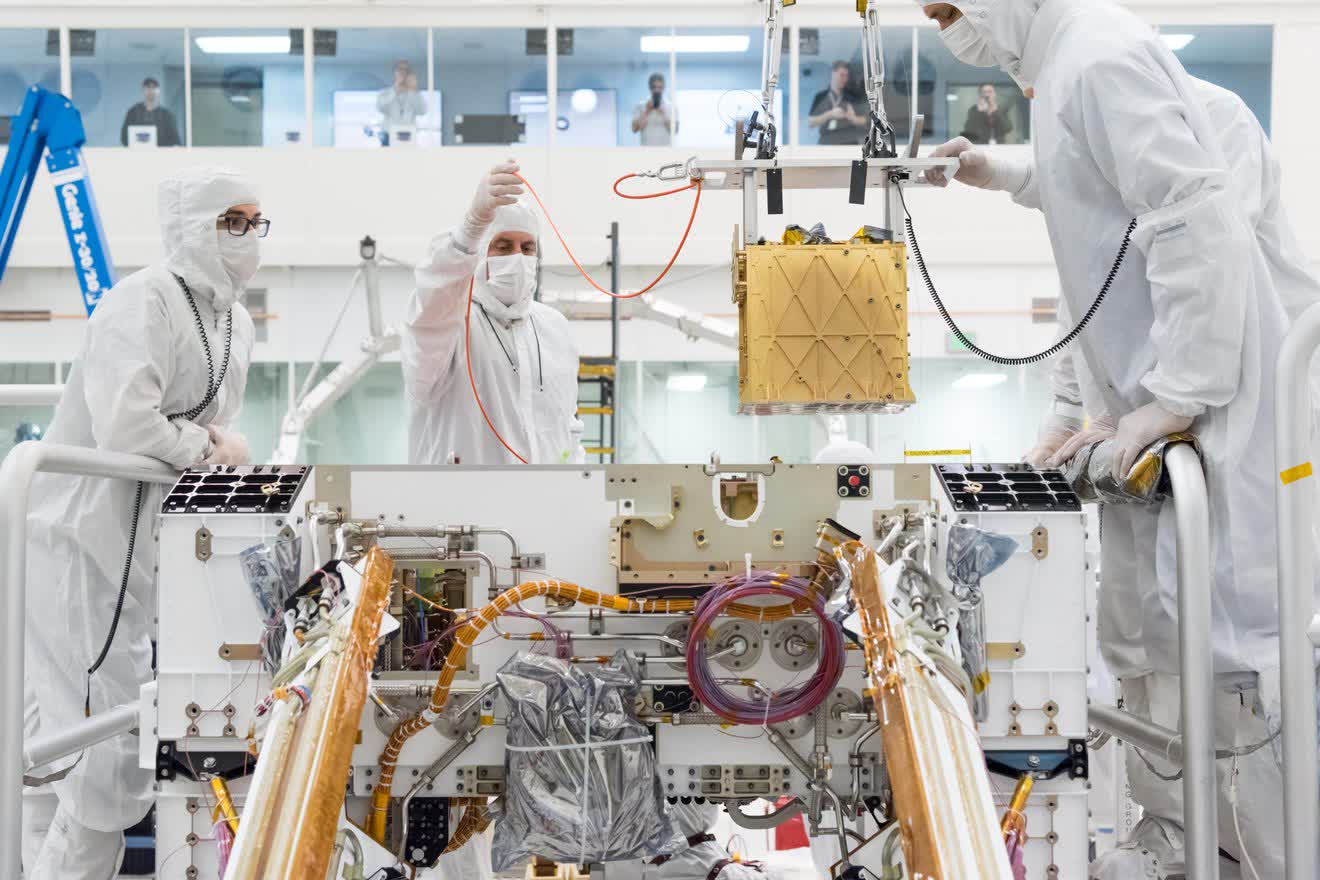What just happened? A milestone in the long-term plan for bases on Mars was passed recently when NASA announced it had generated breathable oxygen from the planet's thin atmosphere. It's not a lot - enough to keep a small dog alive for over ten hours - but the hope is that similar technology could eventually allow astronauts to breathe and provide rocket propellant to get them home.
When the Perseverance rover touched down on Mars in February 2021, one of the instruments it carried was a 40-pound, microwave-sized device called the Mars Oxygen In-Situ Resource Utilization Experiment, aka MOXIE.
MOXIE has been working over the last 2.5 years to extract the trace amounts of oxygen from Mars' atmosphere, which is mostly carbon dioxide (95%) and nitrogen (3%). On its 16th and final run on August 7, the instrument made 9.8 grams of oxygen, bringing the total to 122 grams. NASA writes that the amount is enough for a small dog to breathe for ten hours. It might not sound like a lot, but it's still an amazing achievement and more than double the amount of oxygen - which is at least 98% pure - that scientists had expected MOXIE to make. When pushed to its limits at maximum production levels, MOXIE generated 12 grams of oxygen per hour.

Future crew of the Mars space mission
MOXIE works by pulling in Martian air via a pump and using an electrochemical process that separates one oxygen atom from each molecule of carbon dioxide. As the gases flow through the system, they're analyzed to check the purity and quantity of the oxygen produced.
The aim is to scale up the technology so it can be used for future missions to Mars, enough for humans to breathe and for fuel to make the return journey back to Earth. This would allow astronauts to live off the land, using materials they find on the Red Planet's surface to survive, and make travelling to Mars more feasible as there would be less cargo to carry when making the trip of over 34 million miles.
"When the first astronauts land on Mars, they may have the descendants of a microwave-oven-size device to thank for the air they breathe and the rocket propellant that gets them home," NASA officials wrote. "By proving this technology in real-world conditions, we've come one step closer to a future in which astronauts 'live off the land' on the Red Planet," said Trust Kortes, director of technology demonstrations at NASA's Space Technology Mission Directorate.
The next step from the MOXIE pilot program would be to design a more efficient version of the instrument. Rather than MOXIE 2.0, NASA suggests a full-scale system that includes an oxygen generator like MOXIE and a way to liquefy and store that oxygen.
https://www.techspot.com/news/100102-nasa-generates-enough-oxygen-mars-small-dog-breathe.html
